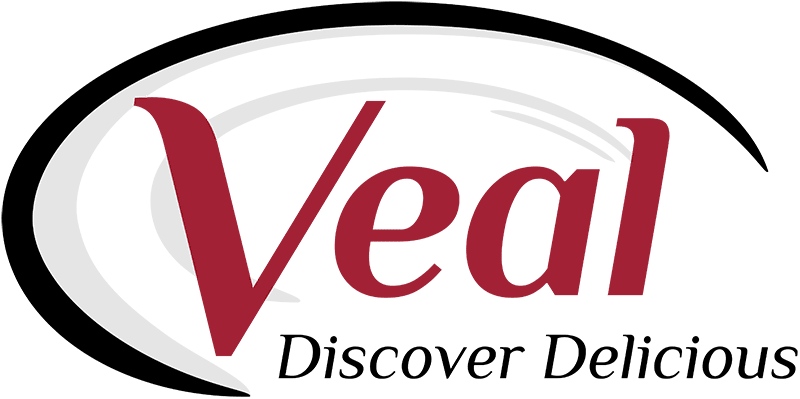March VEAL BLOG
Promotions
The North American Meat Institute, a contractor to the Beef Checkoff, will conduct the Sixth Annual Summit for all Veal Producer, Packer, Processor, Distributor, Retail and Food Service Partners and State Beef Council Staff. The purpose of the Summit is to provide an update on the FY 2019 Veal Promotion and Veal Quality Assurance programs, highlight exciting new food service initiatives, seek input on research and promotion efforts for FY 2020 and conduct an information exchange on the major issues that most affect the veal industry. The Summit meeting information is as follows:
DATE: Wednesday, May 1, 2019
TIME: 9:30 AM until 4:00 PM EDT
PLACE: Liberty Hall at the Breslin/Ace Hotel
16 West 29th Street
New York, New York
Additional information, including an agenda and lodging information, will be forwarded in the near future.
All interested parties are encouraged to attend this important event to help develop a roadmap for future veal demand enhancement programs and to strengthen dialogue among industry partners. If further information is needed, please contact Bill Sessions at: bsessions@meatinstitute.org or on 703/881-1030.
Veal Quality Assurance
VQA Certification requirements
What is required to be Veal Quality Assurance certified?
-
Maintain a Veterinarian/Client/Patient/Relationship
-
Adhere to the best management practices outlined in each section of the VQA manual
-
Have a licensed veterinarian assess and provide documentation that Best Management Practices are being followed
-
Participate in a VQA educational presentation by an industry representative, and document completion of the training
-
Complete and pass a VQA test following the educational presentation
-
Continually review practices for ongoing improvement and innovation on the farm
Documentation to complete and submit for certification is contained within the VQA Manual and all the resource materials can be accessed online at https://www.vealfarm.com/certification-resources . For additional questions contact: DonnaM@LookEast.com
Re-certification is required every three years.
Regulatory Affairs
USDA, FDA Announce Formal Agreement to Regulate Cell-Based Meat Products: The Food Safety and Inspection Service (FSIS) and the Food and Drug Administration (FDA) recently announced a formal agreement unveiling a regulatory framework regarding cell-based meat and poultry products. The formal agreement describes both agencies’ oversight roles and responsibilities and explains how the agencies will collaborate to regulate the development and entry of these products into commerce. Under the agreement, FDA will oversee cell collection, cell banks and cell growth and differentiation. A transition from FDA to FSIS oversight will occur during the cell harvest stage. At that point, FSIS will oversee the production and labeling of human food products derived from the cells of livestock and poultry.
FDA Publishes Second Installment of Intentional Adulteration Draft Guidance. The Food and Drug Administration (FDA) recently released the second installment of a draft guidance document designed to help food facilities comply with the Intentional Adulteration (IA) Rule under the Food Safety Modernization Act (FSMA). The IA rule requires covered food facilities to implement risk-reducing strategies for processes that are significantly vulnerable to intentional adulteration. This installment of the guidance adds to, and incorporates elements of, the previously published guidance with chapters addressing components of a food defense plan, how to conduct vulnerability assessments and food defense monitoring requirements, among other topics. This installment also includes food defense plan worksheets in Appendix 1 and adds an appendix that features detailed examples of vulnerability assessments using the Three Fundamental Elements and the Hybrid Approach. To submit comments on the draft guidance, click here.
FSIS Issues Guidance for Industry Regarding Customer Complaints. The Food Safety and Inspection Service (FSIS) issued guidanceto help the meat and poultry industry develop written programs to respond to consumer complaints about adulterated or misbranded meat and poultry products. FSIS said it developed the guidance in response to an increase in the number of recalls of meat and poultry products contaminated with foreign materials. Comments on the guidance are due May 10, 2019.
FDA Commissioner to Resign. Food and Drug Administration (FDA) Commissioner Scott Gottlieb announced he will resign from his position in one month. In his resignation letter to Health and Human Services Secretary Alex Azar, Gottlieb cited his work to reduce tobacco use, discourage teen use of e-cigarettes, address the opioid epidemic and improve access to generic drugs. During his tenure, Gottlieb launched a new nutrition strategy to address diet-related disease, though much of those plans have not yet been implemented. Under his leadership, FDA also pursued policies introduced in the previous administration, including finalizing a ban on trans-fat and implementing calorie labeling on restaurant menus. There has not yet been an announcement about a possible successor for Gottlieb.
FDA Unveils New Imported Food Safety Plan. The Food and Drug Administration (FDA) recently unveiled a new strategy to enhance the safety of foods imported to the U.S. FDA said the strategy is designed to meet four key goals: prevent food safety problems in the foreign supply chain before entry into the U.S., detect and refuse entry of unsafe food at the border, respond quickly to reports of unsafe imported food and measure progress to ensure that the imported food safety program is effective and efficient. As part of the strategy, FDA will take new steps, including increased inspections at U.S. ports and foreign food facilities, to ensure imported foods meet the same standards as domestically-produced food. In addition, FDA will employ a systems recognition program to identify countries that have food safety systems and oversight activities that are comparable to those of the U.S. Such a system will enable FDA to prioritize inspection and border screening activities on foods imported from higher-risk areas. The strategy also will incorporate data from FDA’s foreign supplier verification programs into its screening of high-risk foods through the Predictive Risk-based Evaluation for Dynamic Import Compliance Targeting system.
FSIS Begins Industry Testing for PHIS Export Component’s Second Country Group. Industry testing recently began for phase two of the Food Safety and Inspection Service’s (FSIS) Public Health Information System (PHIS) Export Component. Testing will run through April 4. FSIS, in February, announced it will begin implementing the phase two PHIS Export Component on May 20, 2019, instead of March 4, as originally planned. Starting May 20, FSIS will issue Certificates of Wholesomeness for Meat and Poultry (FSIS Form 9060-5) and Siluriformes Fish (FSIS Form 9060-5S) to Angola, Antarctica, Aruba, Bhutan, Botswana, Bouvett Island, Brunei Darussalam, Christmas Island, Comoros, Eritrea, Falkland Islands, Faroe Islands, French Southern and Antarctic Islands, Greenland, Guernsey, Heard Island and McDonald Islands, Isle of Man, Jersey, Lesotho, Liechtenstein and Vietnam. Establishments interested in testing the PHIS Export Component should contact PHISTechnicalQA@fsis.usda.gov.
FSIS Revises Directive on Substances Used in Meat, Poultry and Egg Production. The Food Safety and Inspection Service (FSIS) issued a revised directive updating the list of safe and suitable ingredients used in the production of meat, poultry and egg products. This directive provides inspection program personnel (IPP) with an updated list of substances that may be used to produce meat, poultry and egg products and lists approved On-Line Reprocessing and Off-Line Reprocessing Antimicrobial Intervention Systems. FSIS added an aqueous solution of hypochlorous acid for use as a spray, wash, rinse, dip, chiller water or scalding water on whole or cut meat and poultry and phage preparation containing six bacterial phages specific to Shiga toxin-producing E. coli for use on the surface of beef carcasses, among other substances. To view the changes made to the table of safe and suitable ingredients, click here.
Scientific Affairs
National Academies Update Dietary Reference Intakes for Sodium and Potassium. A new report from the National Academies of Sciences, Engineering and Medicine updates the Dietary Reference Intakes (DRIs) for sodium and potassium that were established in 2005. Specifically, the report reaffirms the sodium Adequate Intakes (AI) for individuals ages 14-50, decreases the sodium AIs for children ages 1-13, increases the sodium AIs for adults ages 51 and older and decreases the potassium AIs for individuals age 1 and older. The report also uses guidance from a 2017 National Academies report to introduce the first DRI specific to chronic disease risk reduction.
The updated sodium AIs are 110 mg daily for infants 0-6 months; 370 mg daily for infants 7-12 months; 800 mg daily for children ages 1-3; 1,000 mg daily for ages 4-8; 1,200 mg daily for ages 9-13; and 1,500 mg daily for ages 14 and older. The National Academies established a Chronic Disease Risk Reduction Intake (CDRR) for sodium, recommending individuals aged 14 and older reduce their sodium intake if it exceeds 2,300 mg per day.
Meanwhile, the updated potassium AIs, which are lower than those established in 2005, are 400 mg daily for infants 0-6 months; 860 mg daily for infants 7-12 months; 2,000 mg daily for children ages 1-3; and 2,300 mg daily for ages 4-8. The potassium AIs for other age groups range from 2,300 to 3,400 mg per day, based on sex and life-stages. The National Academies could not establish a potassium CDRR because of unexplained inconsistencies in the body of evidence, a lack of intake-response relationship and limited evidence of relationships between potassium intake and chronic disease risk.
Health and Wellness Advisory Committee Call Summary Now Available. The Health and Wellness Advisory Committee (HWAC) held its monthly call March 5. Committee members discussed the recently-published EAT-Lancet report titled, “Food in the Anthropocene: The Eat-Lancet Commission on Healthy Diets from Sustainable Food Systems,” which recommends that people greatly reduce their meat consumption to benefit both their health and the planet. Committee members also received updates on the Dietary Guidelines Advisory Committee (DGAC) process, including information about the individuals who were selected to serve on the DGAC. Additionally, members learned about a new report from the National Academies of Sciences, Engineering and Medicine that updates the Dietary Reference Intakes for sodium and potassium. A summary of the call is available here. The next HWAC call will be held Wednesday, April 3 at 2 p.m. ET.
Meetings, Events and Education
Meat Industry Summit Housing and Registration Now Open. Join industry professionals, April 8-11, at the Park Hyatt Aviara in Carlsbad, California. The Summit will provide high-caliber educational programming and excellent networking opportunities. For more information or to register, click here.
Fourteenth Annual Power of Meat Study Explores Meat and Poultry’s Role in Today’s Food Culture; Webinar Planned for Thursday. The Foundation for Meat and Poultry Research and Education and the Food Marketing Institute (FMI) last week released the 14thannual Power of Meat Study, which examines how to best optimize the role of meat and poultry in today’s food culture and details meat’s overall role in supporting a food retailer’s reputation.
According to the report, consumers are increasingly shopping for meat across the store, from the meat case and counter to the frozen aisle and the deli. The study showed that across all departments, convenience-focused meat and poultry saw robust growth in 2018, including value-added (up 5.1 percent), fully-cooked (up 2.5 percent) and frozen (up 2.2 percent) products. The report encourages retailers and suppliers to consider new ways to help shoppers plan meat purchases for multiple meals.
The report also found that in-store promotional signage has become the top platform consumers use to check meat and poultry specials, surpassing the print ad’s dominance after a 13-year run as the top resource. This suggests there is a need for retailers and suppliers to consider creative new ways to engage the meat shopper.Digital, social and mobile are also seen as import platforms for promotional materials.
Two-thirds of shoppers seek “better-for-me items” and approximately three in 10 look for meat products that are better for the planet, farmers, workers or animals, according to the report. Meal kits and online grocery shopping provide additional opportunities to encourage further meat sales.
The annual report was compiled by 210 Analytics, LLC, in partnership with Sealed Air’s Food Care Division. An overview of the report’s top ten findings is available here. The full report is available for purchase here. The Meat Institute will host a webinar this Thursday, March 14, from 2-3 p.m. ET, to discuss the findings in this year’s report. To register for the webinar, click here.














